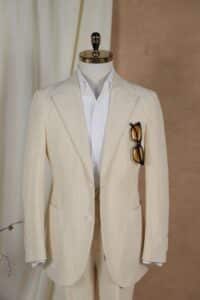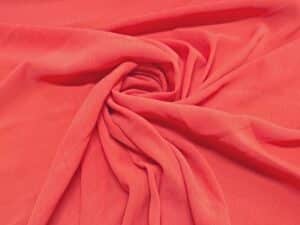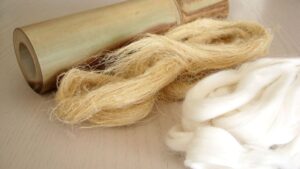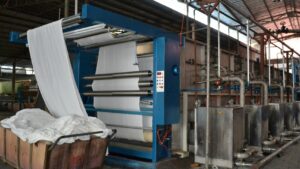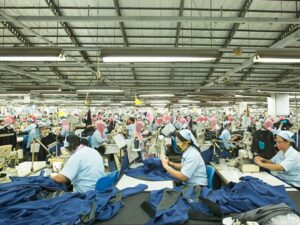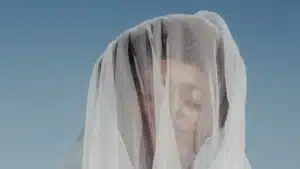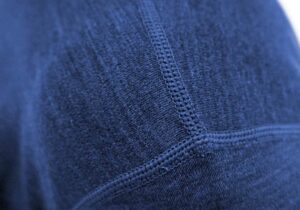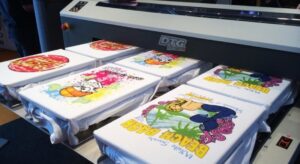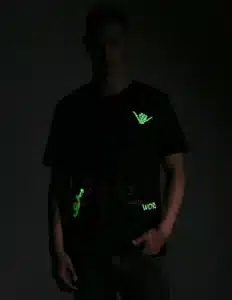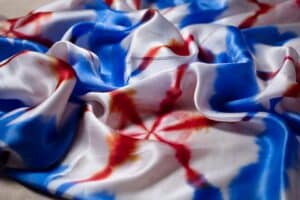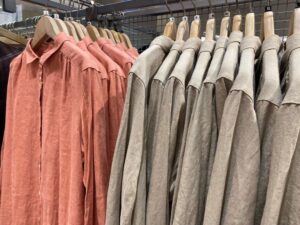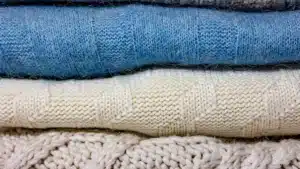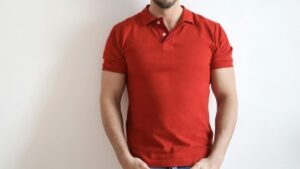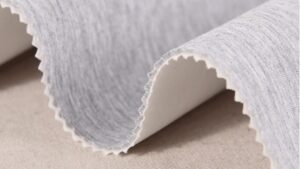
Zigzag stitches are useful and have a side-to-side pattern. This stitch is important for many sewing tasks because it’s flexible. You can use it on stretchy fabrics without tearing or breaking threads. It’s great for finishing edges, stopping fraying, and making buttonholes stronger. Zigzag stitches can also make your sewing look more decorative. Whether fixing rips, adding trims, or sewing elastic, this stitch is both helpful and creative for any project.
Key Takeaways
Zigzag stitches are stretchy and stop fabric edges from unraveling. They help finish edges neatly and make projects last longer.
For stretchy fabrics, a three-step zigzag stitch is strong. It moves with the fabric, perfect for activewear and swimwear.
Zigzag stitches can make your sewing projects look better. Use them on seams, cuffs, or collars for a fun design.
When adding trims or elastic, zigzag stitches hold well and stretch. This makes them great for hems and waistbands.
Change stitch width and length based on the fabric. Wide stitches are good for thick fabrics, and narrow ones for thin materials.
Understanding Zigzag Stitches

What Is a Zigzag Stitch?
A zigzag stitch makes a back-and-forth, angled pattern. This design is very useful for many sewing tasks. It helps secure fabric edges to stop fraying or unraveling. It also adds stretch to seams, perfect for fabrics like spandex. Besides being practical, it can make projects look decorative and creative.
There are different zigzag stitches for specific uses. Here’s a simple guide:
Type of Zigzag Stitch | Description |
|---|---|
Narrow Zigzag | Small-width stitch, good for delicate fabrics and edges. |
Wide Zigzag | Large-width stitch, strong and great for seams. |
3-Step Zigzag | Three-step stitch, ideal for stretchy fabrics. |
Straight Stitch | Zero-width zigzag, works like a regular straight stitch. |
Zigzag sewing machines let you change stitch width and length easily. This makes them great for beginners and experts alike.
How Does a Zigzag Stitch Work?

A zigzag stitch moves the needle side to side as fabric passes through. This creates the zigzag pattern. You can adjust the stitch width and length on most machines. Wider stitches give more strength, while narrow ones suit delicate fabrics.
The machine uses the needle and feed dogs to make even stitches. The needle moves in zigzags, looping thread around the fabric to hold it. This strengthens seams and stops edges from fraying. For stretchy fabrics, it adds flexibility so seams won’t break.
You can use zigzag stitches for finishing edges, sewing elastic, or adding decorations. They are easy to use and work for many sewing projects.
Practical Uses of Zigzag Stitches
Zigzag Stitch for Finishing Edges
A zigzag stitch is great for finishing fabric edges. It wraps thread around edges to stop fraying or unraveling. This method works on clothes, home items, and accessories.
You can use it on light fabrics like cotton or heavy ones like denim. Change the stitch width and length to match the fabric. For thin fabrics, a narrow zigzag gives a neat finish. For thick fabrics, a wide zigzag makes edges strong and flexible.
This is helpful if you don’t have a serger machine. It’s an easy way to make edges look neat with a regular sewing machine. Learning this skill helps your projects last longer and look professional.
Zigzag Stitches for Stretchy Fabrics
Stretchy fabrics can be tricky, but zigzag stitches help a lot. These stitches let seams stretch without breaking threads. Use them on stretchy materials like spandex, jersey, or knits for strong, flexible seams.
A three-step zigzag stitch works best for stretch fabrics. It makes small, even stitches that are strong and durable. This is perfect for activewear, swimwear, and elastic clothing.
Adjust the stitch width and length to match the fabric’s stretch. Wider stitches work for very stretchy fabrics, while narrow ones suit less stretchy ones. Use a ballpoint needle and polyester thread for better results.
Zigzag stitches create seams that move with the fabric. This makes clothes comfortable and long-lasting. It’s a must-know technique for sewing stretchy materials.
Decorative Zigzag Stitch Uses
Zigzag stitches aren’t just useful—they can also look pretty. Use them to decorate fabric and make your projects stand out. Change the stitch size and angle to create fun patterns.
Designers use zigzag stitches to decorate seams, cuffs, and collars. Bright thread colors make designs pop. You can also attach lace, ribbons, or trims with zigzag stitches for cool textures.
Some sewing machines have fancy zigzag patterns like waves or scallops. These are great for decorating clothes and accessories.
For extra flair, try metallic or colorful threads. Zigzag borders can turn plain fabric into something special. Whether for clothes, home décor, or crafts, zigzag stitches add creative touches.
Attaching Trims and Elastic with Zigzag Stitches
Zigzag stitches are great for adding trims and elastic. They are strong and flexible, making them perfect for stretchy or decorative projects. Whether hemming clothes or adding elastic to waistbands, zigzag stitches make the job easier and long-lasting.
Why Use Zigzag Stitches for Trims and Elastic?
When sewing trims or elastic, you need stitches that stretch and hold well. Zigzag stitches move side to side, gripping fabric and elastic tightly. This keeps elastic in place and helps it stay stretchy. For trims, zigzag stitches give a clean look and keep decorations secure.
Steps to Attach Elastic with Zigzag Stitches
Follow these steps to sew elastic onto fabric with zigzag stitches:
Prepare the Fabric and Elastic
Cut the elastic to the right size. Pin it to the fabric, stretching it evenly. This stops the fabric from bunching while sewing.Set Up Your Sewing Machine
Adjust the stitch width and length. A medium-width zigzag works best for elastic. Use a ballpoint needle to avoid damaging the elastic.Start Sewing
Place the fabric and elastic under the presser foot. Sew slowly, stretching the elastic evenly as you go. The zigzag stitch will hold the elastic securely and let it stretch.Finish the Seam
Backstitch at the end to lock the stitches. Trim extra threads for a neat finish.
Attaching Trims with Zigzag Stitches
Trims like lace, ribbons, or edges can make projects look better. Zigzag stitches help attach these trims securely. Here’s how:
Position the Trim
Place the trim along the fabric edge. Pin it so it doesn’t move while sewing.Choose the Right Stitch Settings
Use a narrow zigzag for delicate trims or a wider one for thicker trims. Adjust the stitch length to match the trim’s texture.Sew the Trim
Guide the fabric and trim under the presser foot. Sew slowly to make sure the zigzag stitch catches both the fabric and trim evenly.
Note: Try colorful threads to make trims stand out. Zigzag stitches can also add a fun design to your project.
Practical Applications
You can use zigzag stitches for many projects with trims and elastic. For example:
Hem edges with zigzag stitches for a neat and decorative finish.
Fix ripped fabric by adding elastic or trims to strengthen weak spots.
Mend stretchy clothes by sewing elastic into seams to repair tears.
Zigzag stitches make seams strong and nice-looking. Whether for clothes, accessories, or home décor, this method is easy and useful to learn.
Benefits of Using Zigzag Stitches
Stopping Fraying and Making Seams Stronger
Zigzag stitches help stop fabric edges from fraying. Sewing along the edge with this stitch creates a barrier. This keeps threads from coming loose. It’s especially helpful for fabrics like knits and wovens that fray easily. Using this stitch gives your projects a neat and professional look.
Zigzag stitches also make seams stronger. They are great for fixing worn or torn fabric. If a seam starts to rip, you can use this stitch to fix it. This helps clothes last longer. Tests show zigzag stitches hold fabric edges well, even after washing many times. Fraying stops where the zigzag stitch is used, proving its strength.
If you don’t have a serger, zigzag stitches are a good option. They work on many types of fabric. You can change the stitch width and length to fit your needs. This makes your sewing durable and tidy.
Adding Flexibility and Strength
Zigzag stitches are great for stretchy fabrics. They move with the fabric, so seams don’t break. Use them on materials like spandex, jersey, or knits. These stitches keep seams strong, even when the fabric stretches.
They also make clothes last longer. Zigzag stitches stop puckering, which can weaken seams. This keeps your sewing looking smooth and strong.
For activewear or clothes that need to stretch, zigzag stitches are perfect. They keep seams secure while letting the fabric move naturally. This mix of flexibility and strength makes them useful for many sewing projects.
Making Sewing Projects Look Better
Zigzag stitches can make your sewing look more decorative. You can change the size and angle to create fun designs. Use them to decorate seams, cuffs, or collars to make them stand out.
Bright or shiny threads can make designs even prettier. A simple zigzag border can turn plain fabric into something special. Some sewing machines have fancy zigzag patterns like waves or scallops for unique looks.
These stitches are also great for attaching trims like lace or ribbons. They hold the trim in place while adding style to your project. Whether for clothes, home décor, or crafts, zigzag stitches let you mix function with creativity.
Tip: Try different thread colors and settings to find new ways to use zigzag stitches in your designs.
Tips for Effective Zigzag Stitching
Adjusting Stitch Width and Length
To get good zigzag stitches, change the width and length. Wider stitches are strong and work for thick fabrics. Narrow stitches are better for thin fabrics or small details.
Try different settings on scrap fabric before starting your project. This shows how the stitches will look and fit your material. For stretchy fabrics, medium-width zigzag stitches are flexible and strong.
Tip: Use short stitches for tight seams and long ones for decoration. Small changes can improve your sewing results a lot.
Choosing the Right Fabric and Thread
Picking the right fabric and thread is very important. The thread should match the fabric’s stretch for strong seams. For stretchy fabrics, use low-stretch thread to avoid breaking.
Here’s a simple guide to help:
Criteria | Explanation |
|---|---|
Thread and Fabric Stretch | Match thread stretch to fabric; low-stretch thread avoids snapping. |
Stitches per Inch | Too many stitches can weaken fabric by making too many holes. |
Stitch Type | Zigzag stitches add flexibility and stop thread from cutting fabric. |
Always test your fabric and thread together first. This makes sure your stitches are strong and neat.
Avoiding Common Mistakes with Zigzag Stitches
Even skilled sewers can make zigzag stitch mistakes. Puckering happens when fabric bunches up. Fix this by adjusting your machine’s tension. Too much tension pulls fabric tight, and too little makes loose stitches.
Skipping stitches is another problem. This often happens with the wrong needle. Use a ballpoint needle for stretchy fabrics. It slides through without tearing the material.
Be careful when sewing buttonholes. Zigzag stitches work well, but uneven sewing can ruin them. Mark the buttonhole clearly and sew slowly for neat results.
Note: Clean your sewing machine often. Dust and lint can mess up stitches and cause uneven sewing.
Zigzag stitches are super useful for sewing and making clothes. They work well for finishing edges, sewing stretchy seams, decorating fabric, and attaching trims or elastic.
These stitches are strong and flexible, making them very important. Tests show they’re great for tough jobs like climbing gear. Stitch patterns and tension help make seams durable:
Test Type | What It Shows |
|---|---|
Strength Check | Zigzag stitches were tested for holding up under pressure, like in climbing and parachuting gear. |
Stitch Pattern Role | Studies show stitch design and tension are key for good sewing results. |
Trying zigzag stitch methods can improve your sewing projects. Whether you’re new or experienced, this stitch is both useful and creative. It’s a skill every sewer should learn.
FAQ
What is the best stitch width for zigzag stitching?
The right stitch width depends on your project. For soft, thin fabrics, pick a narrow width (1-2 mm). For thick fabrics or decoration, go with a wider width (4-6 mm). Always try it on scrap fabric first to check.
Can you use zigzag stitches on all fabrics?
Zigzag stitches work on most fabrics, but not all. Thin materials like silk might wrinkle. Use a stabilizer or change the tension to fix this. Stretchy fabrics like jersey or spandex work best with zigzag stitches.
Why does my fabric pucker when using zigzag stitches?
Fabric puckers when tension or stitch settings are wrong. Lower the thread tension and use a ballpoint needle for stretchy fabrics. Testing on extra fabric can help you find the best settings.
How do you prevent skipped stitches with zigzag stitching?
Skipped stitches happen if the wrong needle is used. Use a ballpoint needle for stretchy fabrics or knits. Make sure the needle is sharp and put in correctly. Adjusting the presser foot pressure can also help.
Can zigzag stitches replace a serger?
Zigzag stitches can finish edges and stop fraying, but they’re not the same as a serger. Sergers make neat overlock seams and cut fabric at the same time. Still, zigzag stitches are a good choice for home sewing projects.

